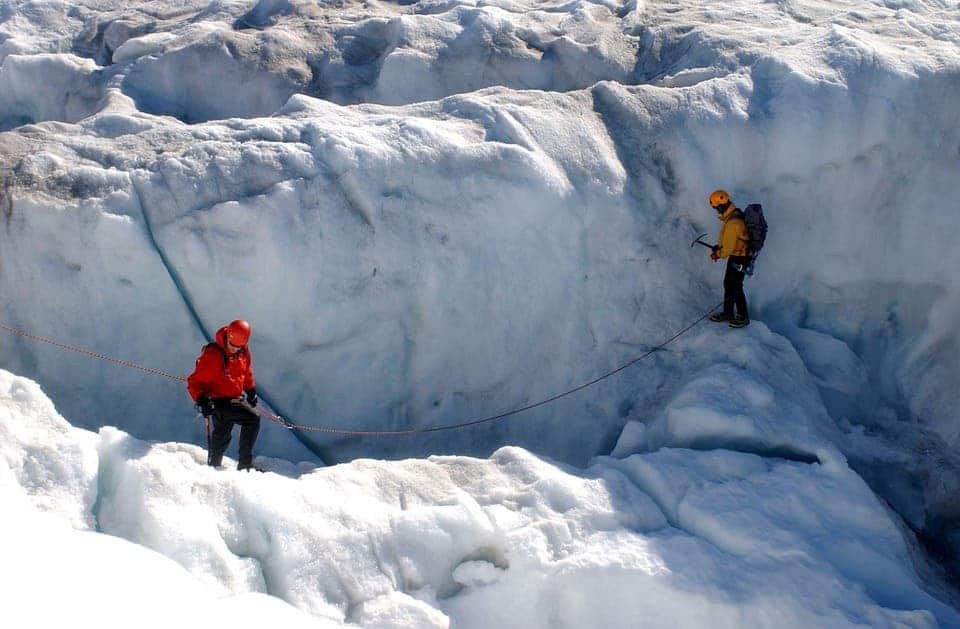Greenland’s contribution to sea-level rise is increasing, as climate change makes the region release meltwater into the ocean.

Greenland’s ice sheet is experiencing an increase in ice slab thickness at its interior regions. These ice sheets are normally porous, allowing meltwater to percolate (drain through) them, but the extra thickness makes them impermeable — so all the meltwater is draining into the ocean.
The process could see the country’s contribution to sea level rise increase by as much as 2.9 inches by 2100.
Thicc ice
“Even under moderate climate projections, ice slabs could double the size of the runoff zone by 2100,” said Mike MacFerrin, a CIRES (Cooperative Institute for Research In Environmental Sciences) and University of Colorado Boulder researcher who led the new study. “Under higher emissions scenarios, the runoff zone nearly triples in size.”
Runoff from ice slabs only amounts to a one-millimeter increase in global sea levels so far, the team explains, but that contribution will expand substantially under climate warming.
In the year 2000, Greenland’s runoff zone — the region of the ice sheet where runoff contributes to sea level rise — was roughly equivalent to the size of New Mexico. Between 2001 and 2013, it expanded by an average of two American football fields per minute, reaching roughly 65,000 sq km.
Even under a moderate emissions scenario, the team adds, it could reach the size of Colorado by 2100. That would raise sea levels by an extra 7-33 mm (one-quarter to one inch) by the same timeframe. Under a high emissions scenario, the situation looks even bleaker: the runoff zone could increase by the size of Texas, according to the new paper, contributing an extra 17-74 mm (half-inch to nearly three inches) of sea-level rise.
The runoff estimates from ice slabs are in addition to other sources of sea-level rise from Greenland, such as calving icebergs.
The team explains that Greenland’s ice sheets are made of layers with different textures. Fresh snow that falls each winter either melts into surface lakes or builds-up and helps compact older snow into glacial ice. Snow that partially melts over summer later re-freezes into thin ice “lenses” between 2 to 5 mm (one or two inches) thick within the compacted snow.
Normally, meltwater can percolate through and around ice lenses, refreezing in place without running off to sea. As mean temperatures over the Arctic increase and melting events become more frequent and extreme, however, these ice lenses solidify into slabs between 1 and 16-meter (3- to 50-foot) thick. These slabs block water from flowing through, which ends up flowing downhill into the ocean.
Climate warming is also increasing the quantity of meltwater in Greenland. In July of 2012, snow and ice melted from 97% of Greenland’s ice sheet surface, which the team says has never before been seen the 33-year-long satellite record. This spring, which was particularly warm and sunny in Greenland, resulted in a record-setting 80 billion tons of Greenland ice melted.
“As the climate continues to warm, these ice slabs will continue to grow and enhance other meltwater feedbacks,” said Mahsa Moussavi, a coauthor on the paper. “It’s a snowball effect: more melting creates more ice slabs, which create more melting, which creates again more ice slabs.”
All in all, this process will fundamentally alter the ice sheet’s equilibrium. The team warns that we need to understand Arctic feedbacks like this one because they show just how much, and how quickly, a warming climate can change Earth’s most vulnerable regions.
“Humans have a choice about which way this goes,” MacFerrin said.
The paper “Rapid expansion of Greenland’s low-permeability ice slabs” has been published in the journal Nature.



